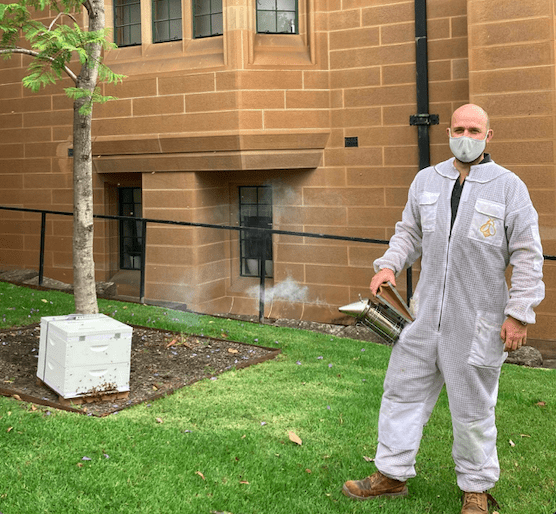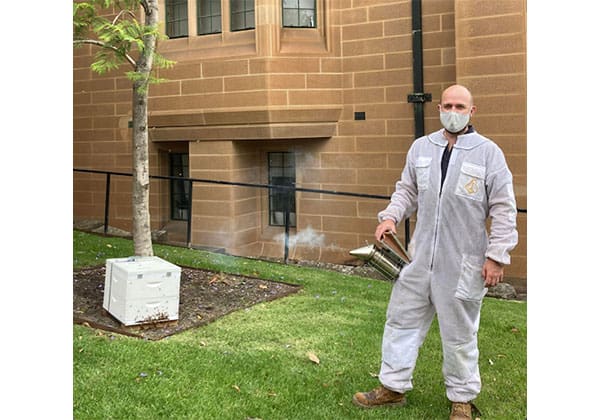A bee migration on Manning Road has seen rescuers called to ensure the safety of students and bees on campus.
The European honey bees (Apis mellifera), which normally reside between a gargoyle and a rusted drainage pipe on the northern facade of the Anderson Stuart Building, migrated to a branch on a juvenile jacaranda tree early this morning.
The swarm was originally thought to be wasps by the Honi Soit editor who unexpectedly stumbled across the insectoid emigration at 8am this morning.
The University called pest control firm Rentokil, which “eradicates and treats pest problems,” to deal with the potentially dangerous situation. It is unclear whether any students have been stung.
That the University would countenance the extermination of honey bees, which are crucial to the ecosystem yet increasingly endangered, should be concerning for students.
Happily, Rentokil passed on the call to Sydney Bee Rescue, “a group of Sydney-based beekeepers who are dedicated to bee conservation.”
The bee rescuer, dressed in a protective suit and with the aid of a smoking device, was able to successfully transfer the bees into a hive. In conversation with Honi, the full-time bee rescuer said that particular attention was paid to the Queen Bee, as all worker bees would follow their leader. The jacaranda branch was also removed and placed into the hive as “it still smells of Queen.”

The rescuer explained that bees were common throughout the University of Sydney, and that such migrations were a natural part of the reproductive cycle. Due to a lack of trees with suitable hollows on campus, bees often make hives in nooks and crannies throughout the Camperdown campus, such as the one at Anderson Stuart.
At the time of reporting, a smoking device was being employed to ensure that the straggling bees remained calm and did not swarm again.
The bees were expected to return to their Anderson Stuart hive in the near future.





